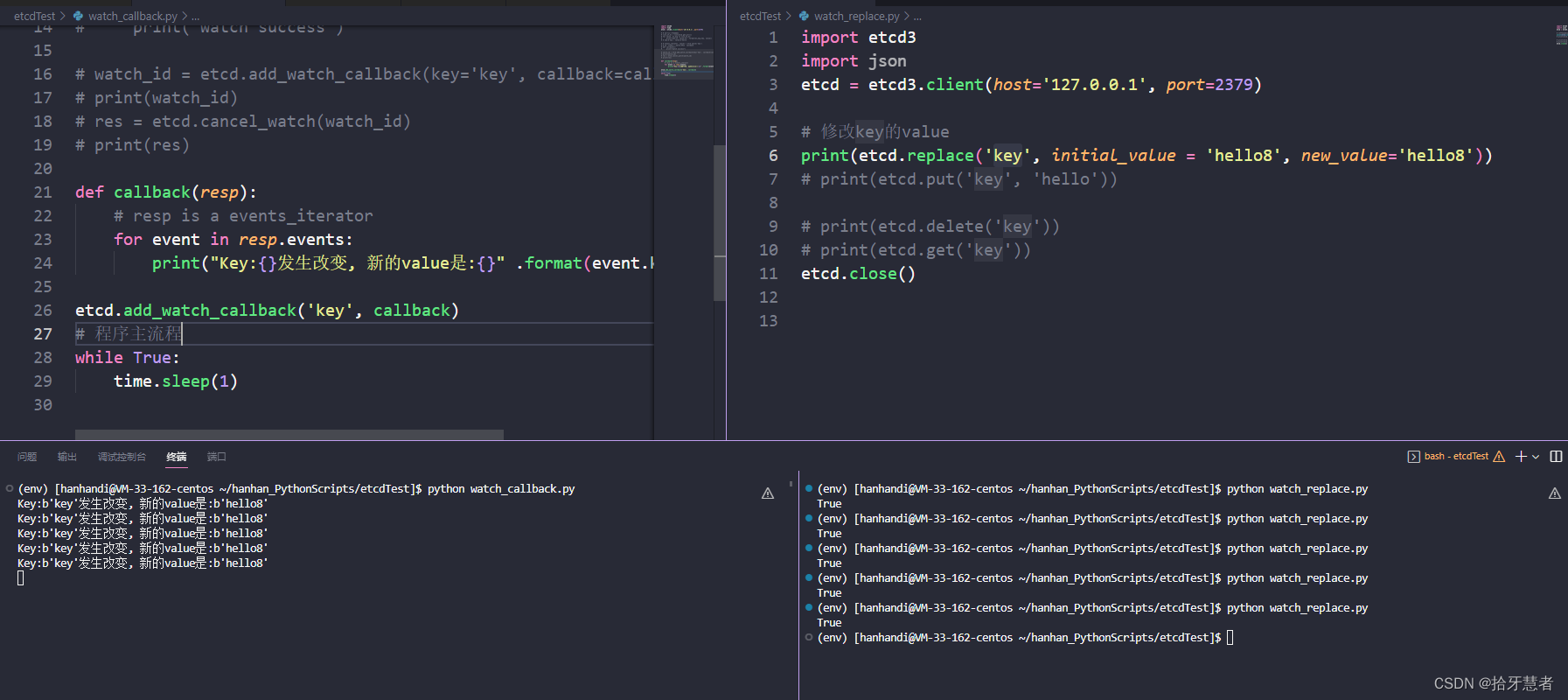文章目录
- 57. 插入区间:
- 样例 1:
- 样例 2:
- 样例 3:
- 样例 4:
- 样例 5:
- 提示:
- 分析:
- 题解:
- rust:
- go:
- c++:
- python:
- java:
57. 插入区间:
给你一个 无重叠的 ,按照区间起始端点排序的区间列表。
在列表中插入一个新的区间,你需要确保列表中的区间仍然有序且不重叠(如果有必要的话,可以合并区间)。
样例 1:
输入:intervals = [[1,3],[6,9]], newInterval = [2,5]输出:[[1,5],[6,9]]
样例 2:
输入:intervals = [[1,2],[3,5],[6,7],[8,10],[12,16]], newInterval = [4,8]输出:[[1,2],[3,10],[12,16]]解释:这是因为新的区间 [4,8] 与 [3,5],[6,7],[8,10] 重叠。
样例 3:
输入:intervals = [], newInterval = [5,7]输出:[[5,7]]
样例 4:
输入:intervals = [[1,5]], newInterval = [2,3]输出:[[1,5]]
样例 5:
输入:intervals = [[1,5]], newInterval = [2,7]输出:[[1,7]]
提示:
- 0 <= intervals.length <= 104
- intervals[i].length == 2
- 0 <= intervals[i][0] <= intervals[i][1] <= 105
- intervals 根据 intervals[i][0] 按 升序 排列
- newInterval.length == 2
- 0 <= newInterval[0] <= newInterval[1] <= 105
分析:
- 面对这道算法题目,二当家的陷入了沉思。
- 按照题意模拟,遍历区间列表,分析新插入区间可能的情况即可。
- 新区间可能在遍历区间的前面,那么直接将新区间插入该位置。
- 新区间可能在遍历区间的后面,那么继续遍历下一个区间。
- 有些复杂的就是有重合的情况,需要合并区间,取最小值作为区间的开始值,最大值作为区间的结束值即可。
题解:
rust:
impl Solution {pub fn insert(intervals: Vec<Vec<i32>>, new_interval: Vec<i32>) -> Vec<Vec<i32>> {let (mut left, mut right) = (new_interval[0], new_interval[1]);let mut placed = false;let mut ans = Vec::new();intervals.into_iter().for_each(|interval| {if interval[0] > right {// 在插入区间的右侧且无交集if !placed {ans.push(vec![left, right]);placed = true;}ans.push(interval);} else if interval[1] < left {// 在插入区间的左侧且无交集ans.push(interval);} else {// 与插入区间有交集,计算它们的并集left = left.min(interval[0]);right = right.max(interval[1]);}});if !placed {ans.push(vec![left, right]);}return ans;}
}
go:
func insert(intervals [][]int, newInterval []int) (ans [][]int) {left, right := newInterval[0], newInterval[1]placed := falsefor _, interval := range intervals {if interval[0] > right {// 在插入区间的右侧且无交集if !placed {ans = append(ans, []int{left, right})placed = true}ans = append(ans, interval)} else if interval[1] < left {// 在插入区间的左侧且无交集ans = append(ans, interval)} else {// 与插入区间有交集,计算它们的并集if interval[0] < left {left = interval[0]}if interval[1] > right {right = interval[1]}}}if !placed {ans = append(ans, []int{left, right})}return
}
c++:
class Solution {
public:vector<vector<int>> insert(vector<vector<int>>& intervals, vector<int>& newInterval) {int left = newInterval[0], right = newInterval[1];bool placed = false;vector<vector<int>> ans;for (const auto &interval: intervals) {if (interval[0] > right) {// 在插入区间的右侧且无交集if (!placed) {ans.push_back({left, right});placed = true;}ans.emplace_back(interval);} else if (interval[1] < left) {// 在插入区间的左侧且无交集ans.emplace_back(interval);} else {// 与插入区间有交集,计算它们的并集left = min(left, interval[0]);right = max(right, interval[1]);}}if (!placed) {ans.push_back({left, right});}return ans;}
};
python:
class Solution:def insert(self, intervals: List[List[int]], newInterval: List[int]) -> List[List[int]]:left, right = newIntervalplaced = Falseans = list()for lv, rv in intervals:if lv > right:# 在插入区间的右侧且无交集if not placed:ans.append([left, right])placed = Trueans.append([lv, rv])elif rv < left:# 在插入区间的左侧且无交集ans.append([lv, rv])else:# 与插入区间有交集,计算它们的并集left = min(left, lv)right = max(right, rv)if not placed:ans.append([left, right])return ansjava:
class Solution {public int[][] insert(int[][] intervals, int[] newInterval) {int left = newInterval[0];int right = newInterval[1];boolean placed = false;List<int[]> ansList = new ArrayList<int[]>();for (int[] interval : intervals) {if (interval[0] > right) {// 在插入区间的右侧且无交集if (!placed) {ansList.add(new int[]{left, right});placed = true;}ansList.add(interval);} else if (interval[1] < left) {// 在插入区间的左侧且无交集ansList.add(interval);} else {// 与插入区间有交集,计算它们的并集left = Math.min(left, interval[0]);right = Math.max(right, interval[1]);}}if (!placed) {ansList.add(new int[]{left, right});}return ansList.toArray(new int[ansList.size()][2]);}
}
非常感谢你阅读本文~
欢迎【点赞】【收藏】【评论】~
放弃不难,但坚持一定很酷~
希望我们大家都能每天进步一点点~
本文由 二当家的白帽子:https://le-yi.blog.csdn.net/ 博客原创~







